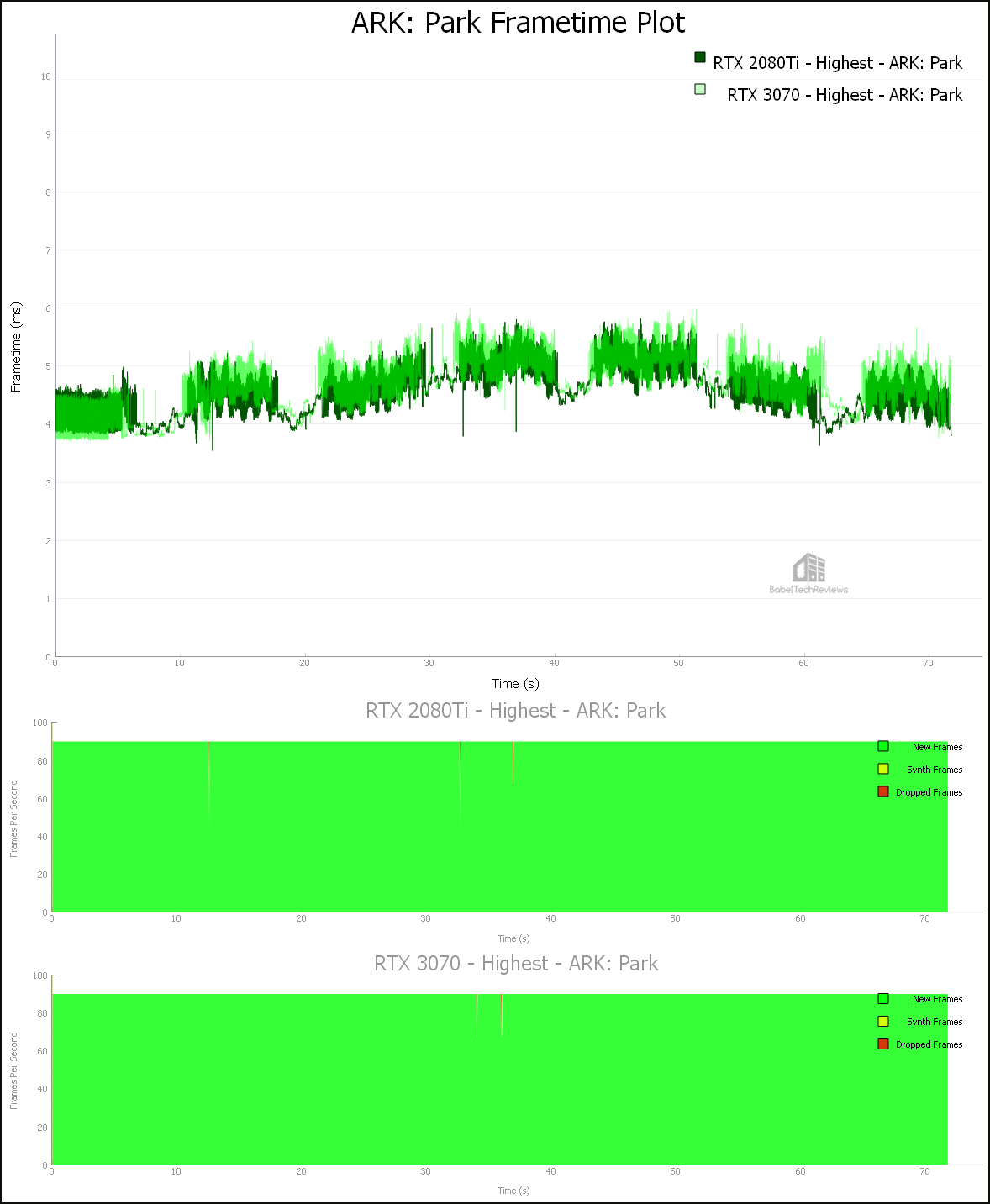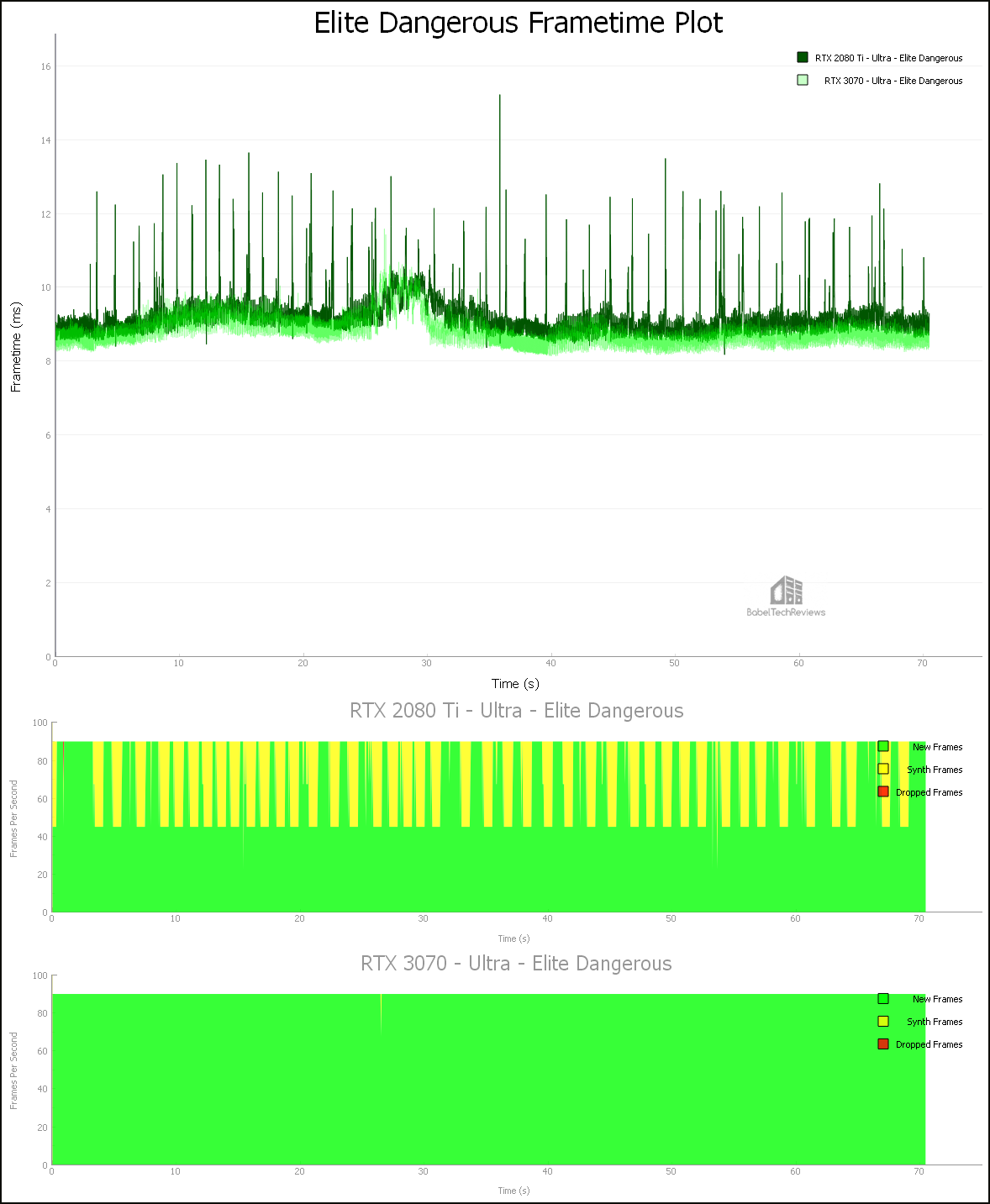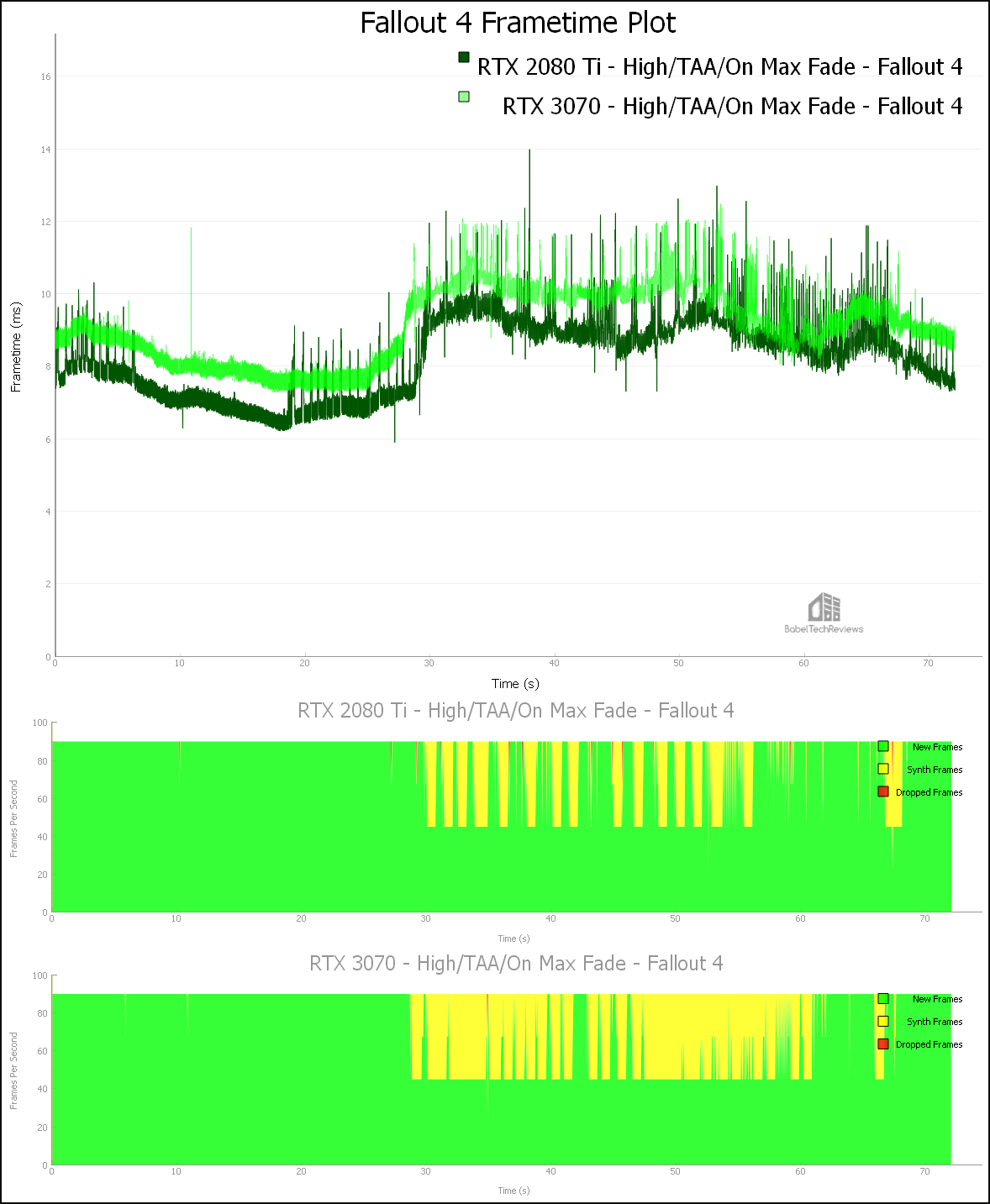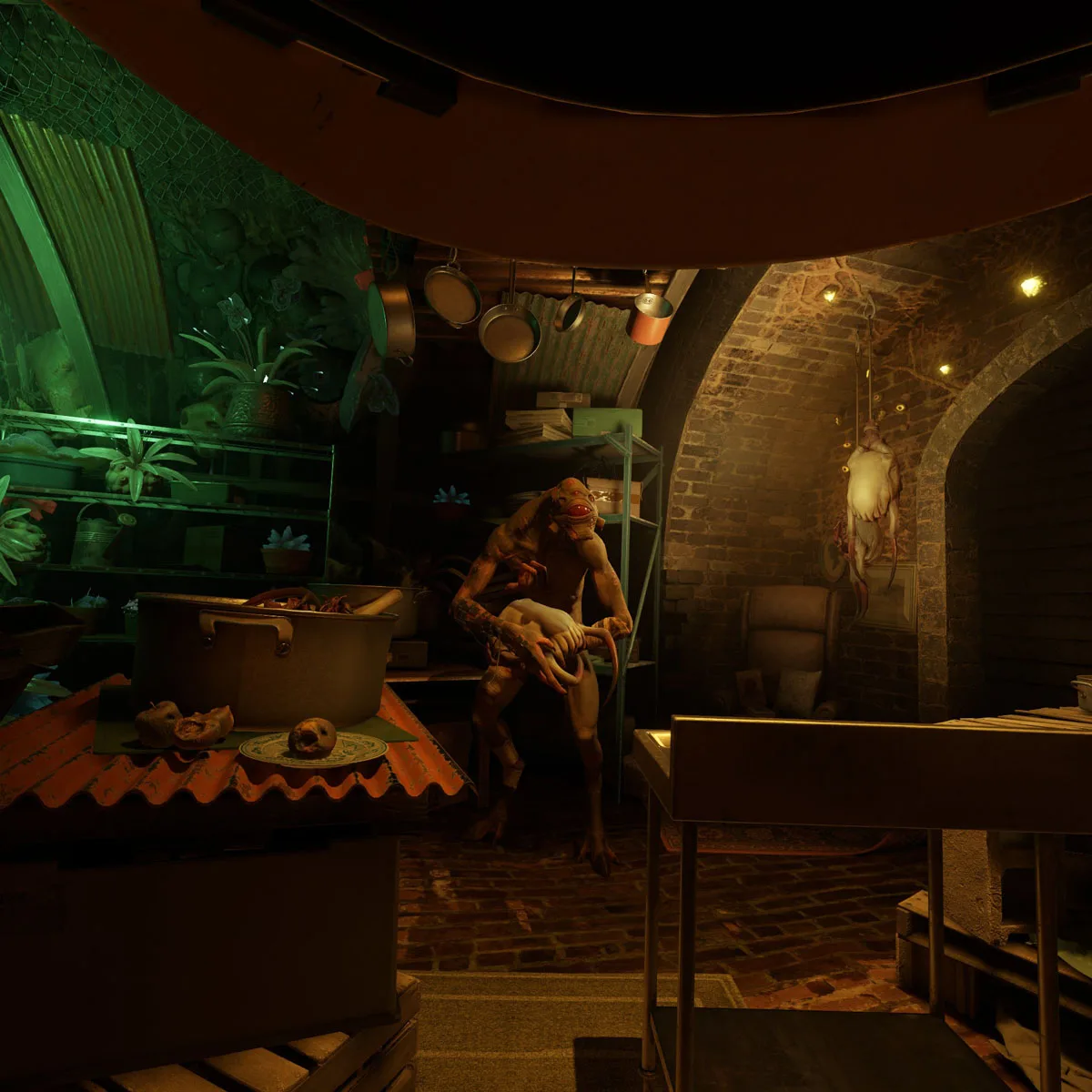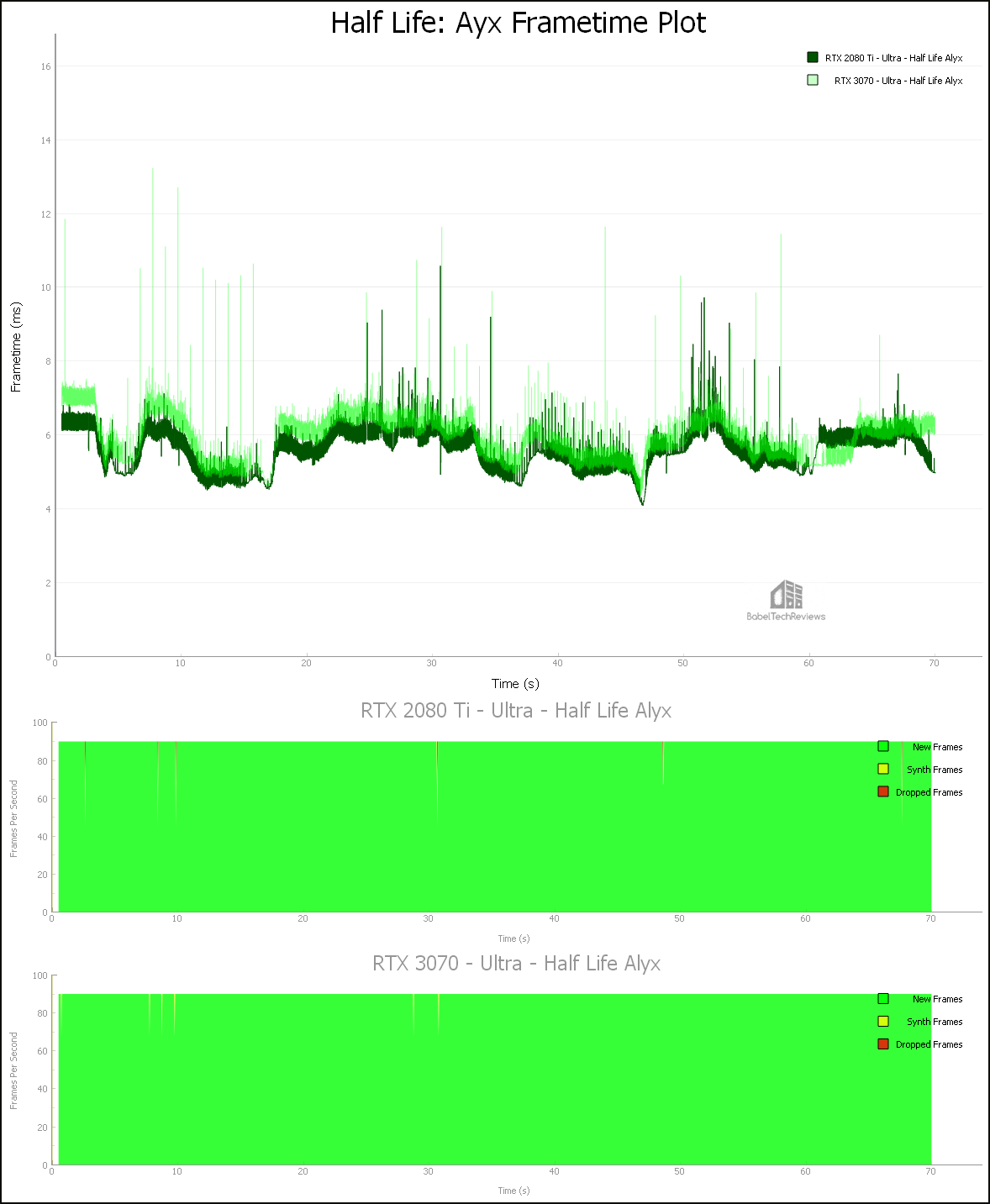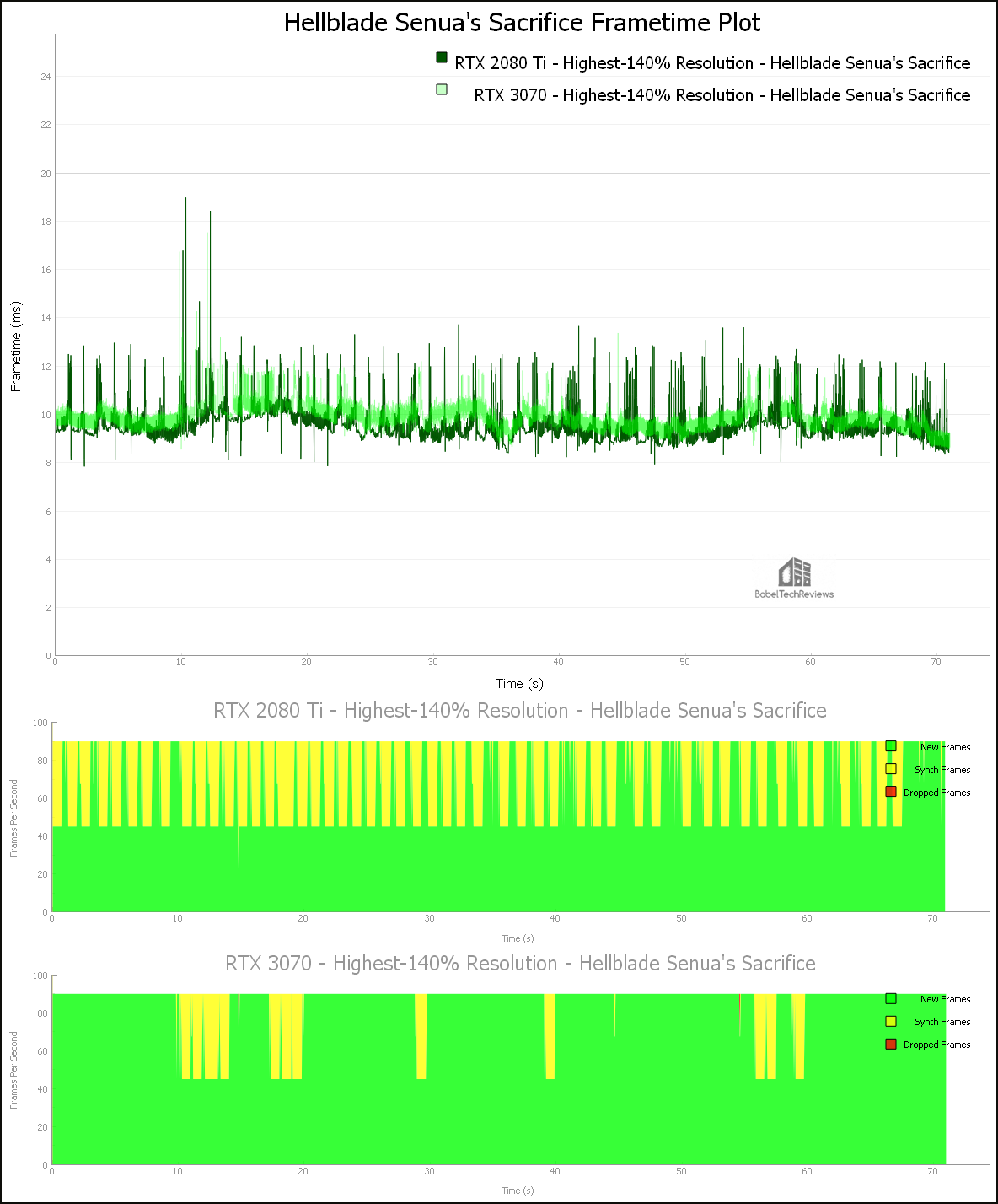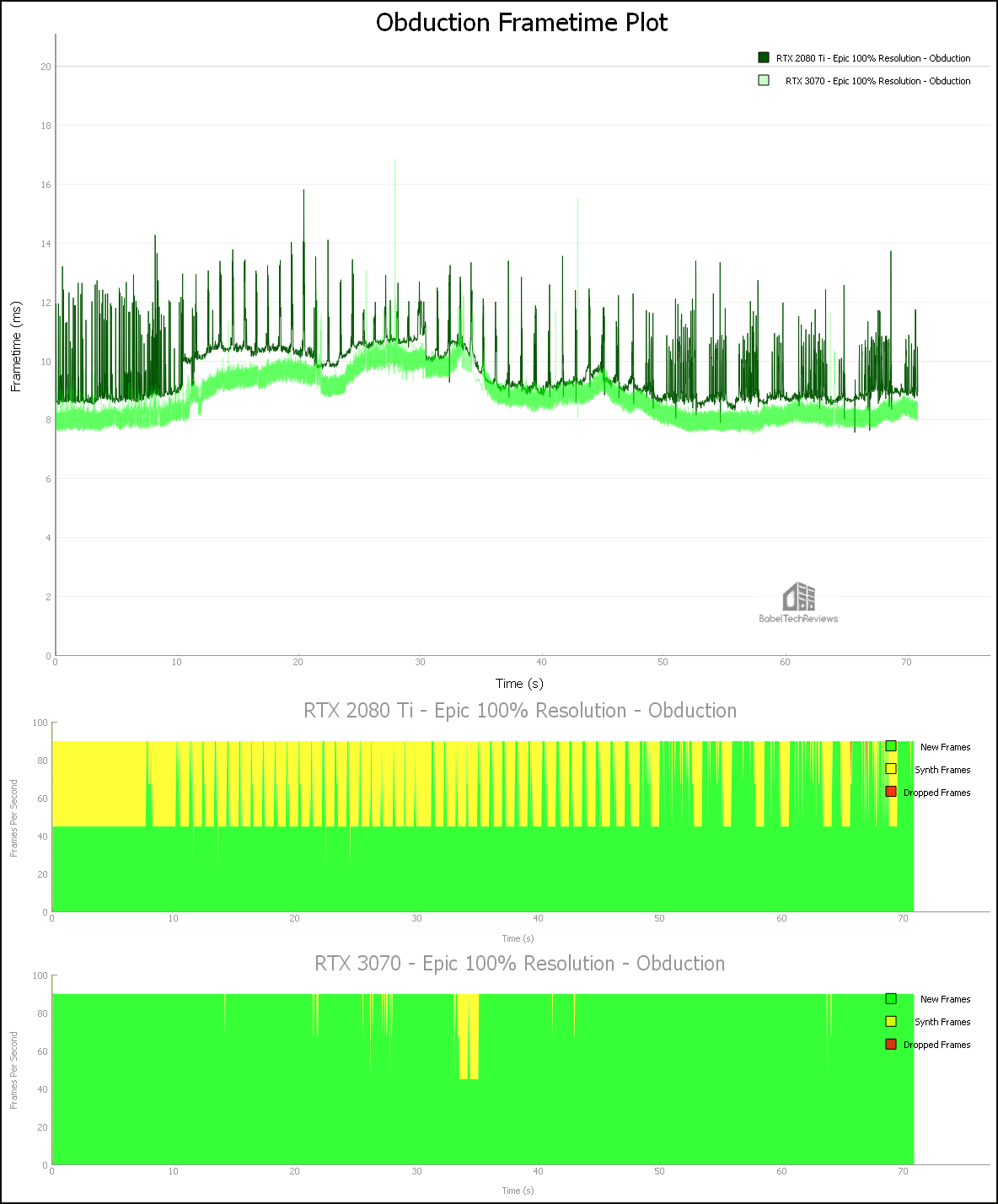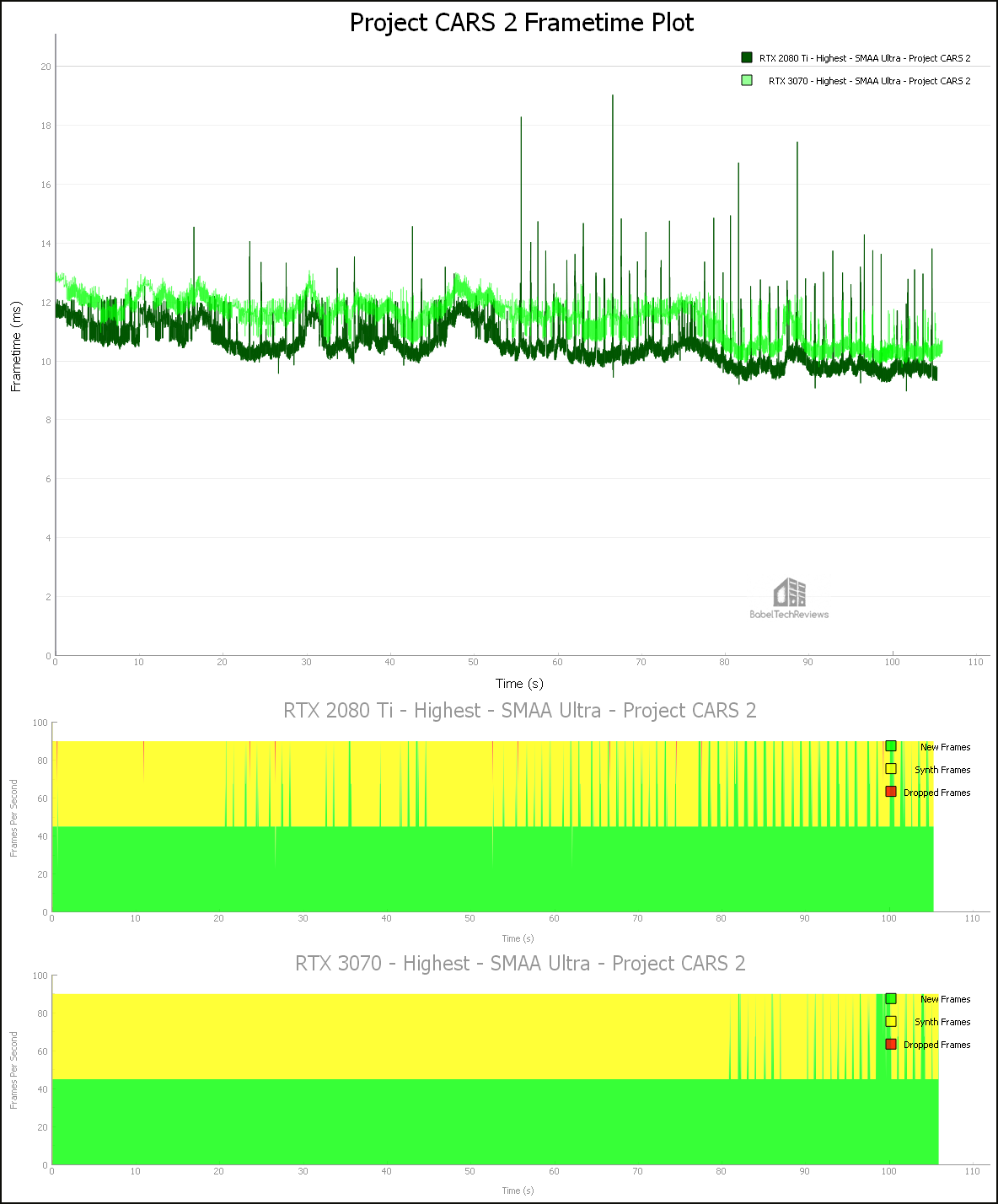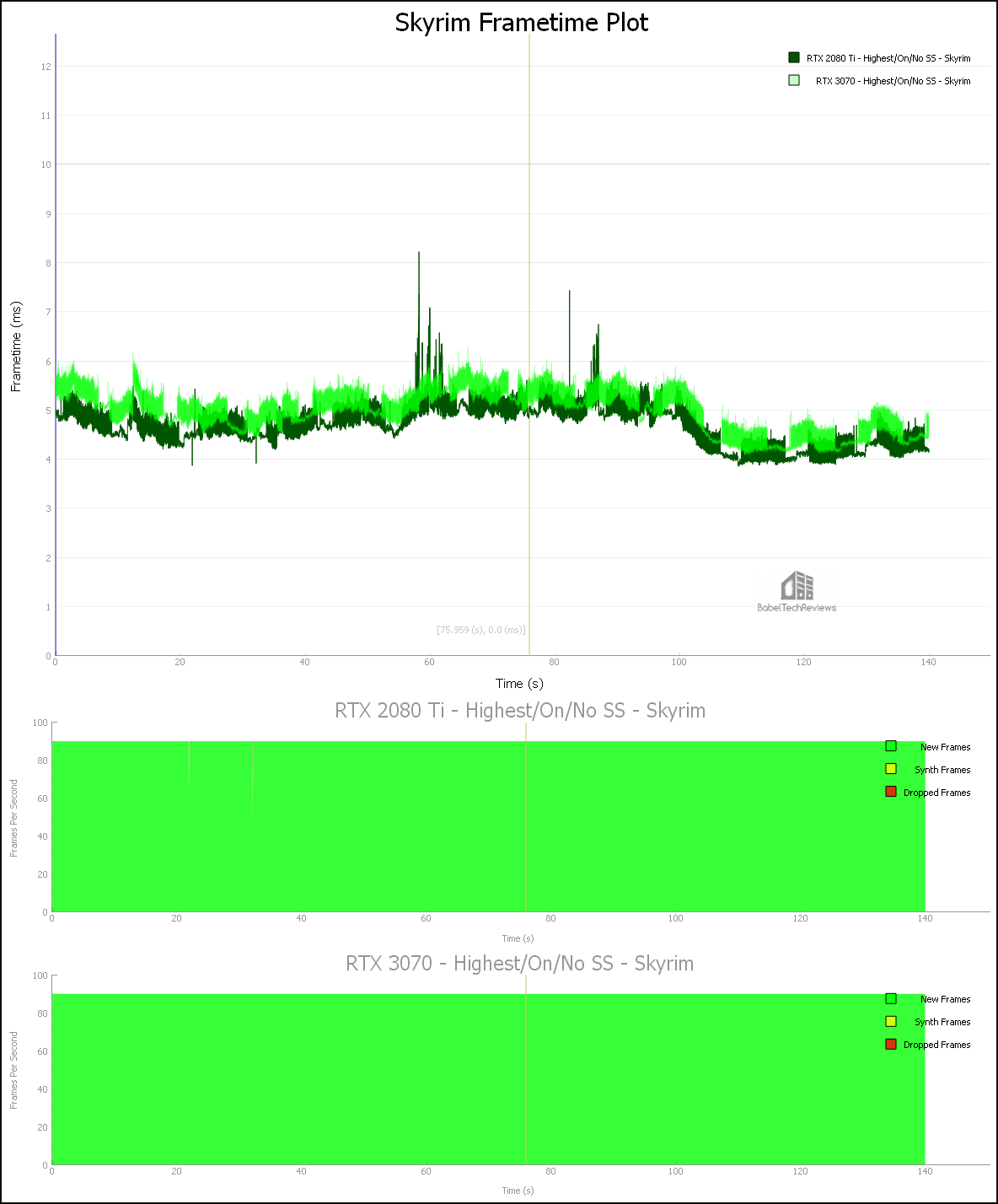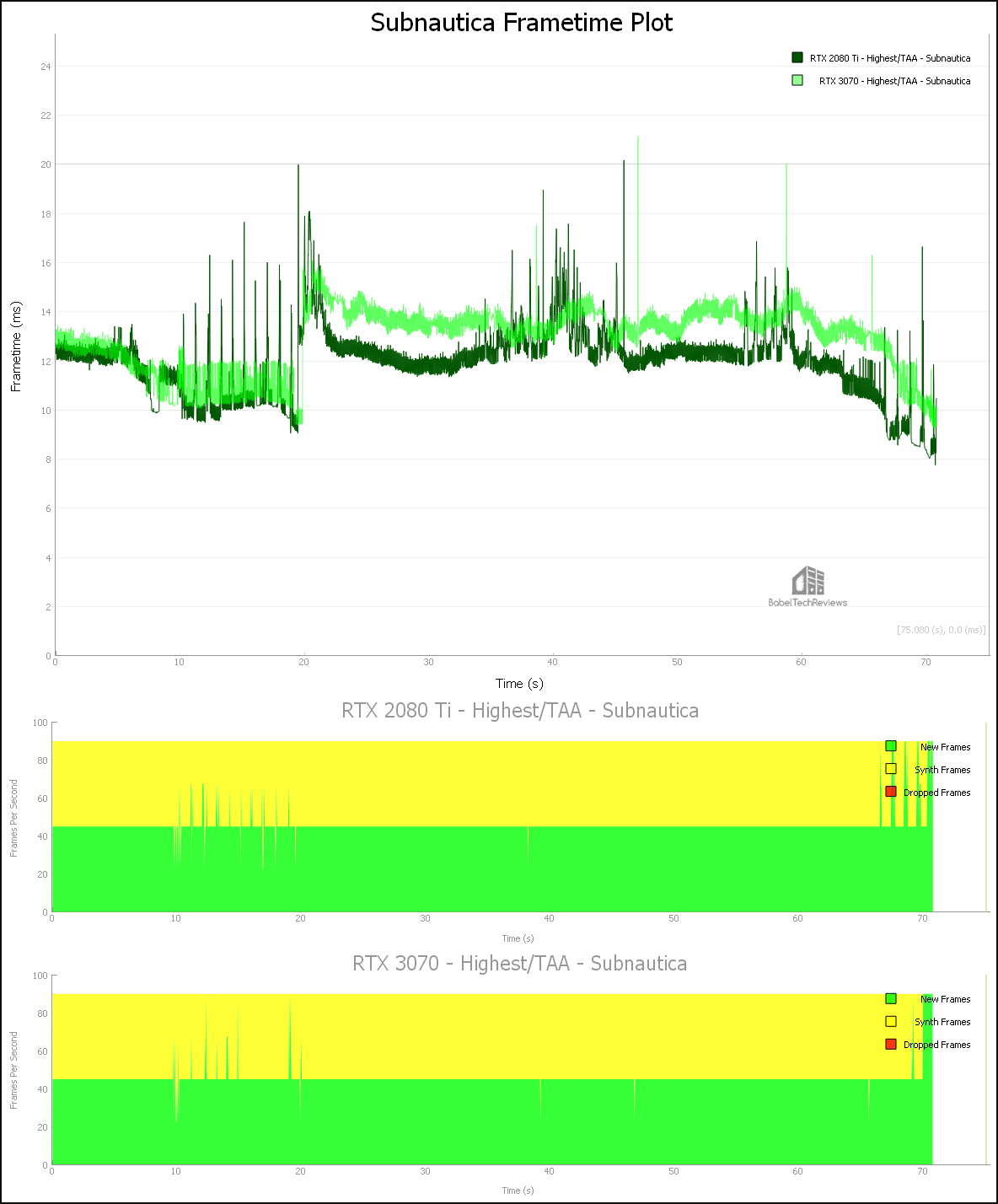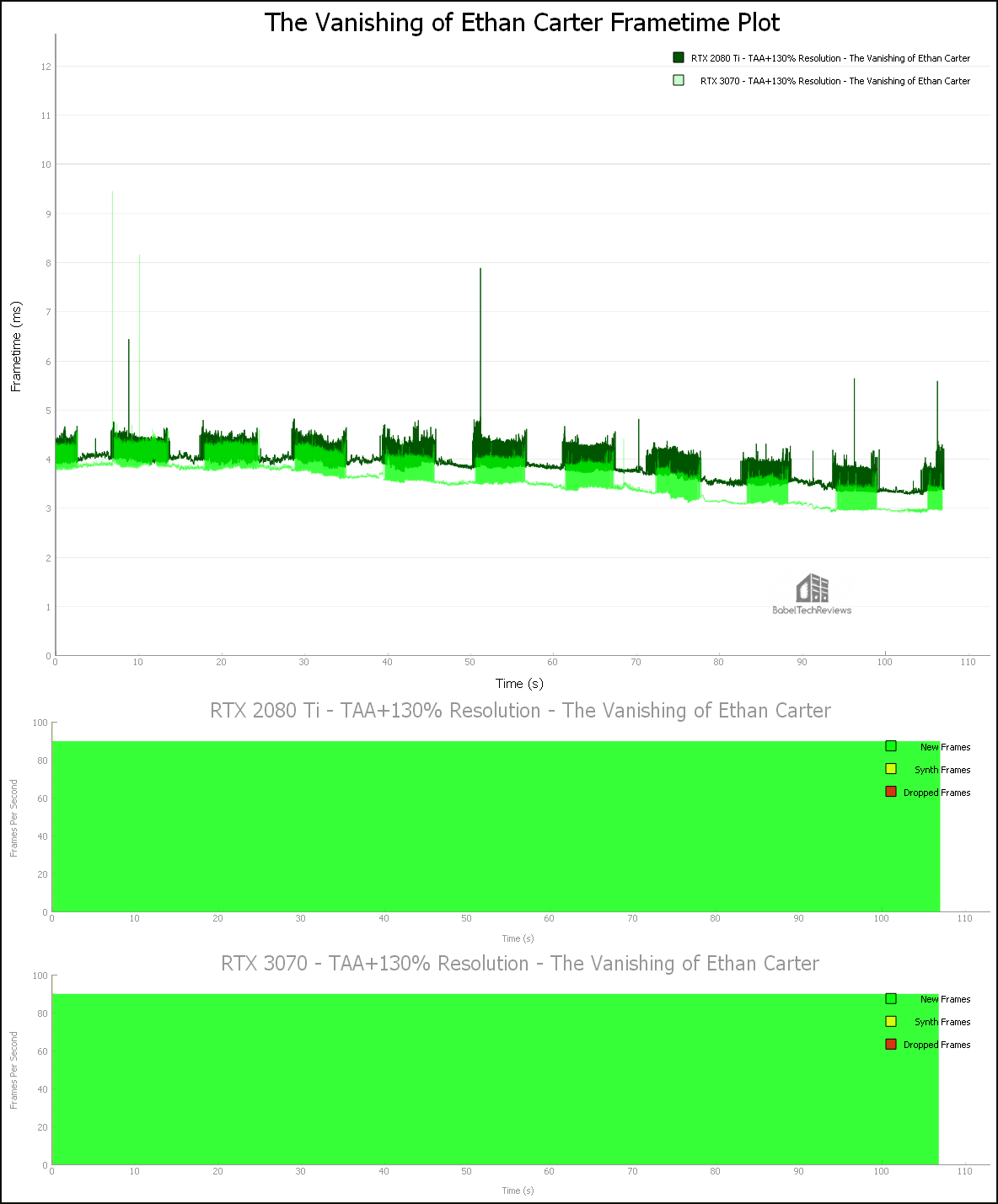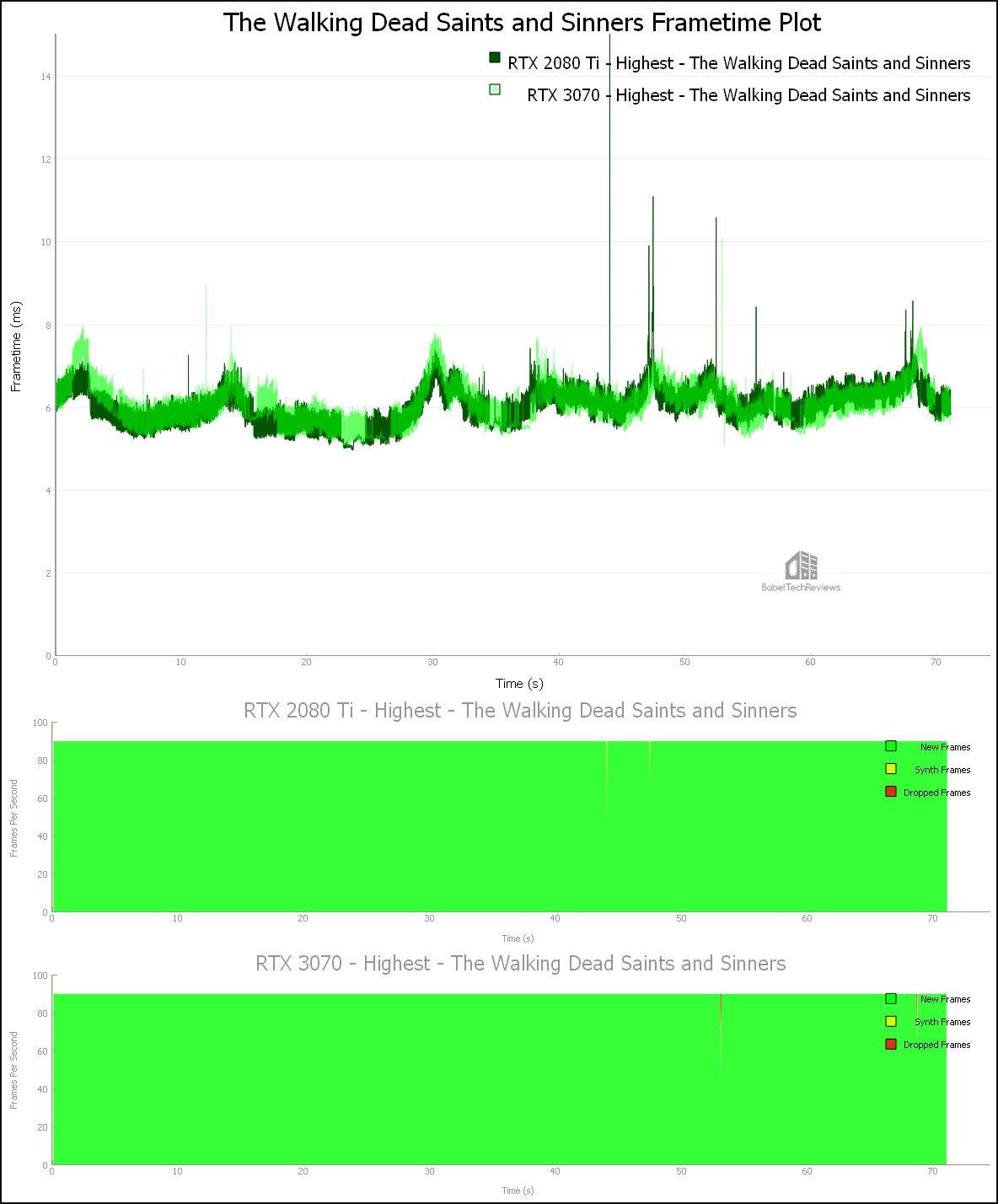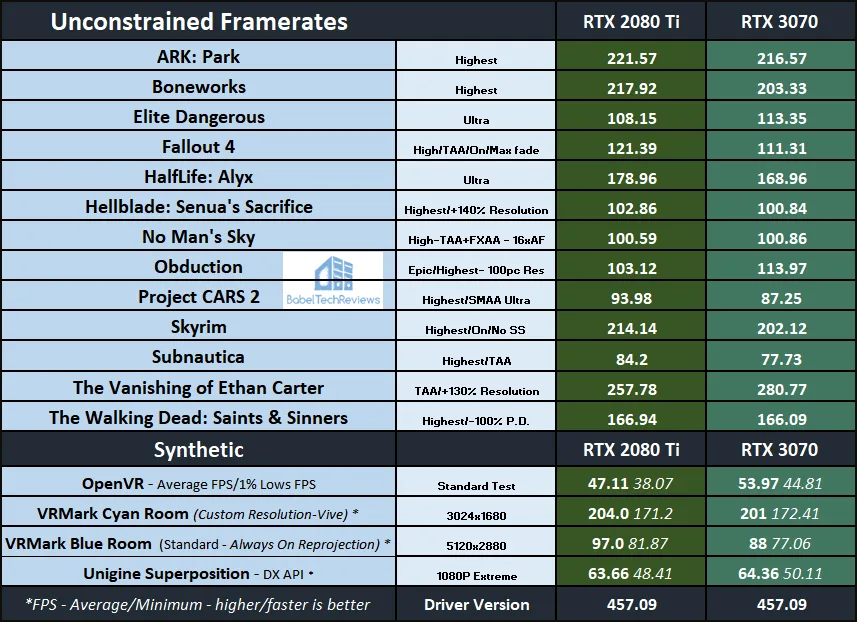VR Wars: Ampere vs Turing – the RTX 3070 vs. the RTX 2080 Ti – Performance benchmarked Using FCAT VR & the Vive Pro
This VR performance evaluation is the follow-up to the RTX 3070 pancake game and application performance launch review. We now present a thirteen-game VR performance showdown between the RTX 3070 and the RTX 2080 Ti using the Vive Pro and FCAT VR.
Since we posted our original VR review, we have benchmarked many VR games for our follow-up reviews for more than three years. We have also compared FCAT VR with our own video benchmarks using a camera to capture images directly from our HMD’s lenses. For BTR’s VR testing methodology, please refer to this evaluation.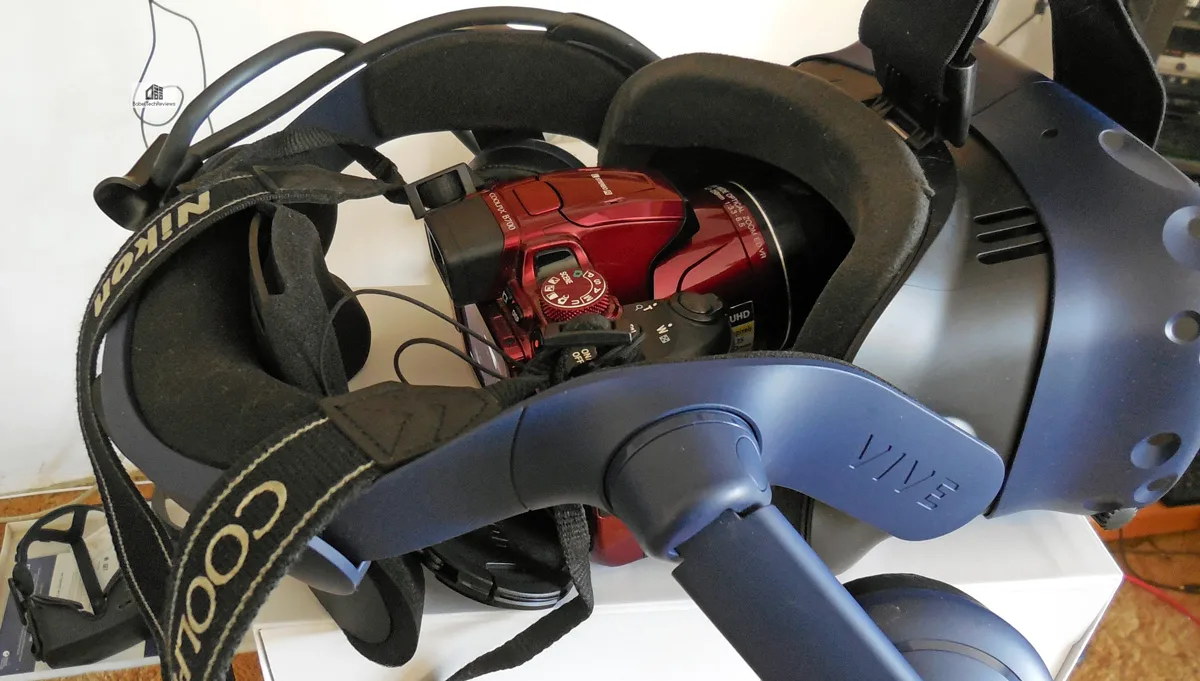
We currently benchmark thirteen VR games using the Vive Pro, and we have recently added Half-Life: Alyx, Boneworks, and The Walking Dead: Saints & Sinners. BTR’s testing platform is an overclocked Intel Core i9-10900K at 5.1/5.0GHz, an EVGA Z490 FTW motherboard, and 32 GB of Vulcan Dark Z DDR4 at 3600MHz on a clean installation of Windows 10 64-bit Pro Edition. Here are the thirteen VR games that we benchmark:
- ARK: Park
- Boneworks
- Elite Dangerous
- Fallout 4
- Half-Life: Alyx
- Hellblade: Senua’s Sacrifice
- No Man’s Sky
- Obduction
- Project CARS 2
- Skyrim
- Subnautica
- The Vanishing of Ethan Carter
- The Walking Dead: Saints & Sinners
It is important to be aware of VR performance since poorly delivered frames will make a VR experience very unpleasant. It is also important to understand how we accurately benchmark VR games using FCAT-VR as explained here. Before we benchmark the performance of thirteen VR games, check out our Test Configuration.
Test Configuration – Hardware
- Intel Core i9-10900K (HyperThreading/Turbo boost On; All cores overclocked to 5.1GHz/5.0Ghz. Comet Lake DX11 CPU graphics)
- EVGA Z490 FTW motherboard (Intel Z490 chipset, v1.3 BIOS, PCIe 3.0/3.1/3.2 specification, CrossFire/SLI 8x+8x), supplied by EVGA
- T-FORCE DARK Z 32GB DDR4 (2x16GB, dual channel at 3600MHz), supplied by TeamGroup
- Vive Pro, on loan from HTC/Vive; the Wireless Adapter is not used for benchmarking
- RTX 3070 Founders Edition 8GB, stock clocks, on loan from NVIDIA
- RTX 2080 Ti Founders Edition 11GB, stock clocks, on loan from NVIDIA
- 1TB TeamGroup MP33 NVMe2 PCIe SSD for C: drive
- 1.92TB San Disk enterprise class SATA III SSD (storage)
- 2TB Micron 1100 SATA III SSD (storage)
- 1TB Team Group GX2 SATA III SSD (storage)
- 500GB T-FORCE Vulcan SSD (storage), supplied by TeamGroup
- ANTEC HCG1000 Extreme, 1000W gold power supply unit
- BenQ EW3270U 32″ 4K HDR 60Hz FreeSync monitor
- Samsung G7 Odyssey (LC27G75TQSNXZA) 27″ 2560×1440/240Hz/1ms/G-SYNC/HDR600 monitor
- DEEPCOOL Castle 360EX AIO 360mm liquid CPU cooler
- Phanteks Eclipse P400 ATX mid-tower (plus 1 Noctua 140mm fan)
Test Configuration – Software
- GeForce 457.09 drivers
- High Quality, prefer maximum performance, single display, as set in the NVIDIA control panel
- Windows 10 64-bit Pro edition; Clean Installation, latest updates v20H2 (October 2020 Update)
- Latest DirectX
- MSI’s Afterburner, 4.6.3 beta to set both cards’ power and temperature limits to their maximums
- All 13 VR games are patched to their latest versions at time of publication
- FCAT VR Capture (latest Beta 03/04/20)
- FCAT VR Beta 18
- SteamVR – at 100% resolution unless specified
13 VR Game benchmark suite & 3 synthetic tests
Synthetic
- VRMark Cyan Room
- VRMarK Blue Room
- Unigine Superposition VR Benchmark
- OpenVR Benchmark
SteamVR /Epic Platform Games
- ARK: Park
- Boneworks
- Elite Dangerous
- Fallout 4
- Half Life: Alyx
- Hellblade: Senua’s Sacrifice
- No Man’s Sky
- Obduction
- Project CARS 2
- Skyrim
- Subnautica
- The Vanishing of Ethan Carter
- The Walking Dead: Saints & Sinners
The Unreal 4 engine is a very popular engine for VR development, and five of our thirteen test games are created with it. The Creation and Unity engines are each used for two games, while the COBRA, No Man’s Sky, Source, and Madness engines are each represented by one game.
It is important to remember that BTR’s charts use frametimes in ms where lower is better, but we also compare “unconstrained framerates” which shows what a video card could deliver (performance headroom) if it wasn’t locked to either 90 FPS or to 45 FPS by the HMD. In the case of unconstrained FPS which measures one important performance metric, faster is better.
Let’s individually look at our thirteen VR games’ performance using FCAT-VR. All of our games were benchmarked at 100% SteamVR resolution, although some games were set in-game to a higher resolution or increased pixel density, as we compare the RTX 2080 Ti versus the RTX 3070.
First up, ARK Park.
ARK Park
ARK Park is a single or multiplayer VR adventure game set in a dinosaur theme park, and it allows gamers to interact with a few of the dinosaurs in ARK: Survival Evolved. The game allows you to explore your own “Jurassic Park” with opportunities to study genetics, raise baby dinosaurs from eggs, ride and paint them, and even defend the park against attacking dinosaurs in a wave shooter segment. 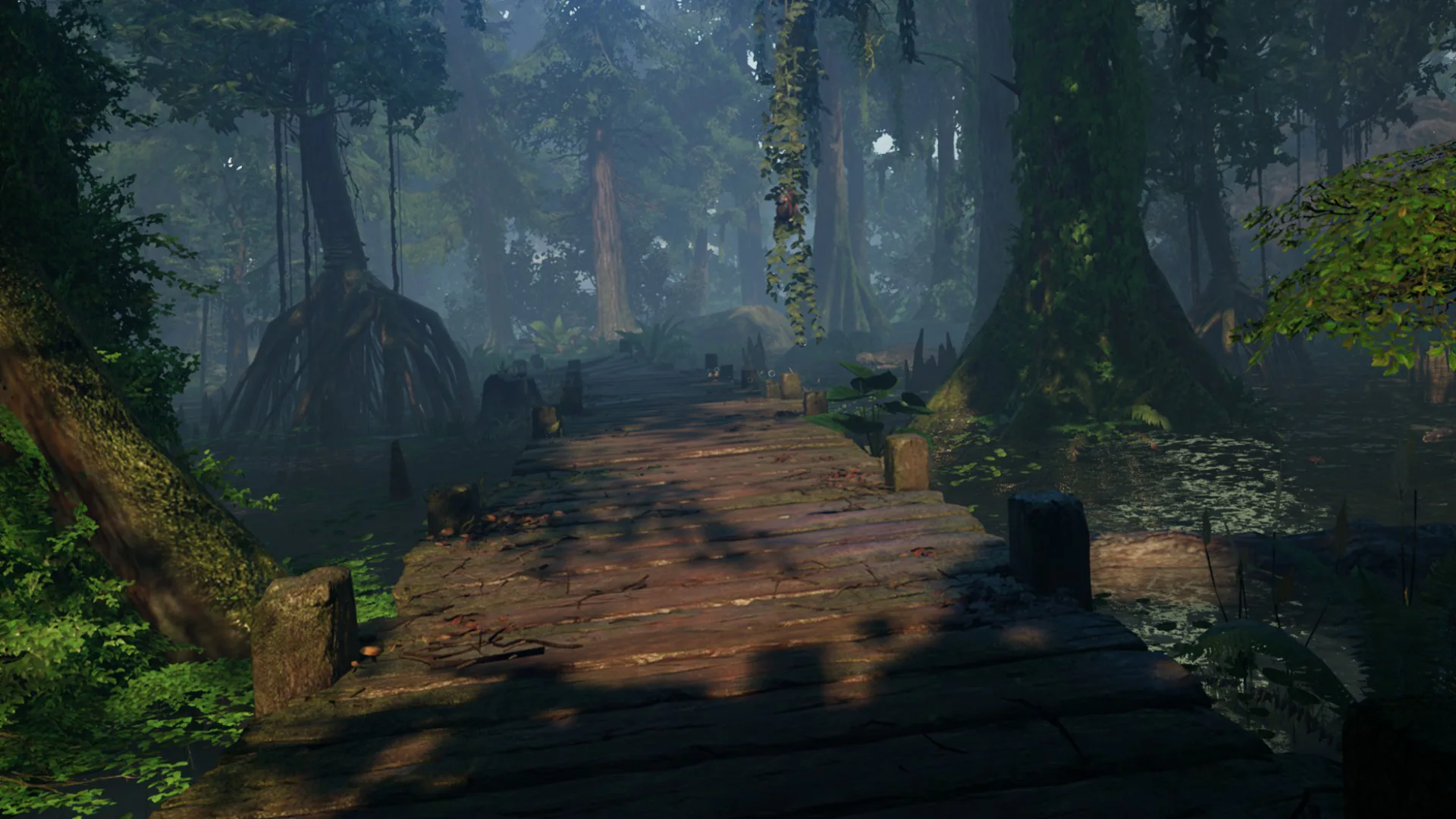
ARK: Park has few adjustable settings so we benchmark using its highest preset setting.
Here are the performance results of our two competing cards using FCAT VR’s generated chart.
Here are the details are reported by FCAT VR:
The RTX 2080 Ti delivered 221.57 unconstrained FPS with 3 dropped frames and 3 frames were synthesized. In addition, it suffered 3 Warp Misses.
The RTX 3070 achieved 216.57 unconstrained FPS with 2 dropped and 2 synthetic frames together with 2 Warp misses. There no perceptible difference playing using either card at our chosen settings as ARK Park is built on the Unreal Engine, and is not demanding although the visuals are quite good. We would recommending increasing the Super Resolution using SteamVR’s settings for both cards.
Next we look at Boneworks.
Boneworks
Boneworks is a rare game that couples a fair single player campaign with an incredible sandbox and next generation VR physics interactive tour de force.
Boneworks is created using the Unity engine with average to very good visuals, and it particularly benefits by allowing for high levels of MSAA up to 8X which we use for benching. We also enable ambient occlusion and use the highest settings, but setting max shadows will just default back to Medium.
Here are the frametimes.
Here are the details are reported by FCAT VR:
The RTX 2080 Ti delivered 217.92 unconstrained FPS with no dropped or synthetic frames.
The RTX 3070 delivered 203.33 unconstrained FPS and with 1 dropped and 2 synthetic frames together with a Warp miss. As with ARK Park, there isn’t any difference playing on either card at our chosen settings as Boneworks is not very demanding, and we would also recommending increasing the Super Resolution in SteamVR settings as well as using NVIDIA’s VRSS for maximum visuals.
Let’s check out Elite Dangerous next.
Elite Dangerous
Elite Dangerous is a popular space sim built using the COBRA engine. It is hard to find a repeatable benchmark outside of the training missions. Our benchmark is set inside an asteroid field while under attack.
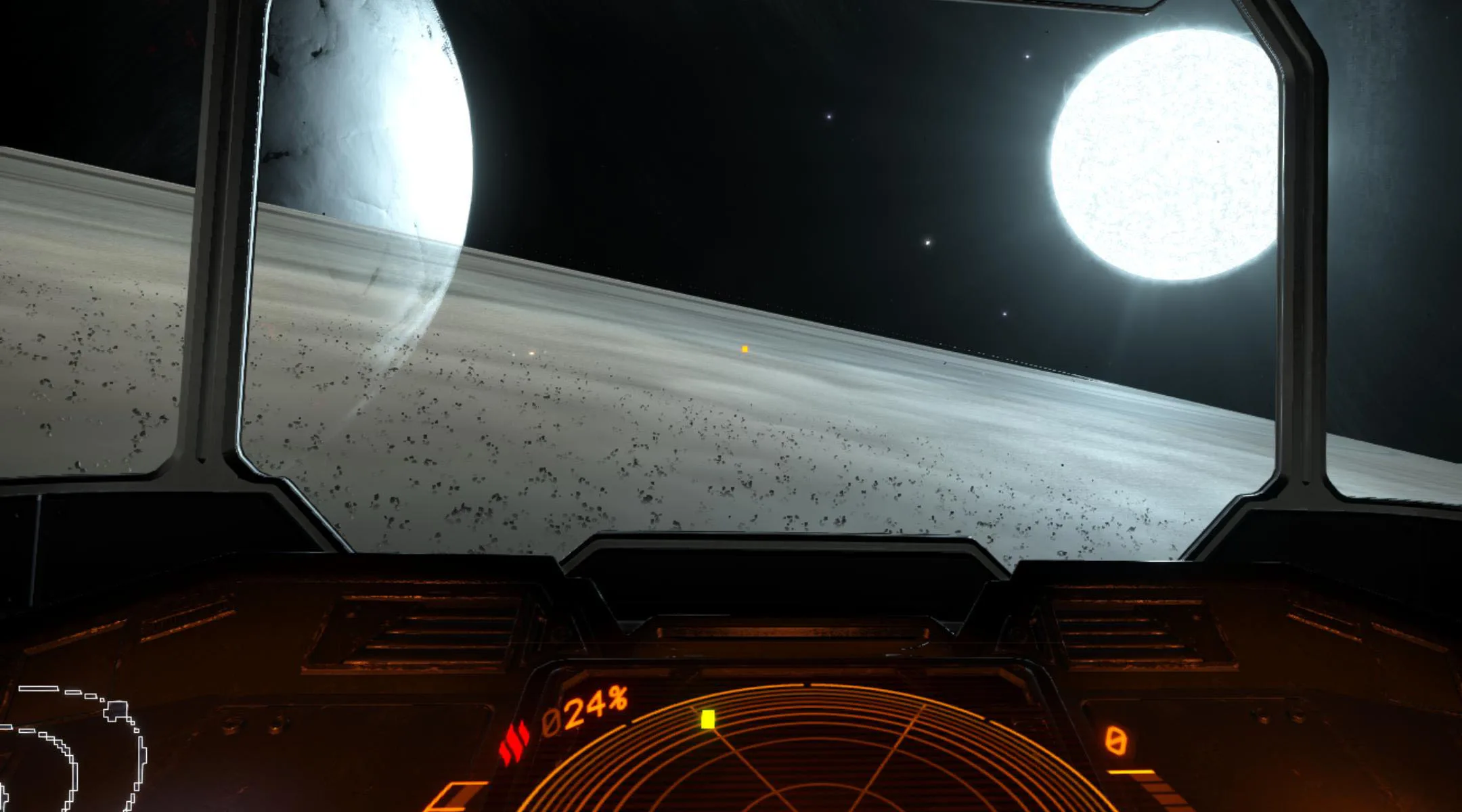 A player will probably spend a lot of time piloting his space cruiser while completing a multitude of tasks. Elite Dangerous is also co-op and multiplayer with a dedicated following of players.
A player will probably spend a lot of time piloting his space cruiser while completing a multitude of tasks. Elite Dangerous is also co-op and multiplayer with a dedicated following of players.
We picked the Ultra Preset and the maximum field of view. Here are the frametimes.
Here are the details are reported by FCAT VR:
The RTX 2080 Ti delivered 108.15 unconstrained FPS with 1 Warp miss and 1 dropped frame, but 25% (1575) of its frames had to be synthesized.
In contrast, the RTX 3070 delivered 113.35 unconstrained FPS with no Warp miss and no dropped frames, but it only required 1 synthetic frame.
It’s rather surprising to see that although the unconstrained FPS are high, the RTX 2080 Ti did not do well compared with the RTX 3070. The experience playing Elite Dangerous at Ultra settings is superior on the RTX 3070 than it is playing with the RTX 2080 Ti. We experienced a similar and even larger performance gap using the RTX 3080 versus the RTX 2080 Ti and are unsure why.
Let’s continue with Fallout 4.
Fallout 4
Fallout 4 uses the Creation Engine. Unfortunately, Bethesda has dropped support for it and the vanilla game, although playable, isn’t a great experience as it remains unoptimized. Index controllers are unsupported and we returned to using Vive’s wands. There are some community mods that make the game more playable and add features that may be worth exploring. We benchmark at its highest settings and with TAA.
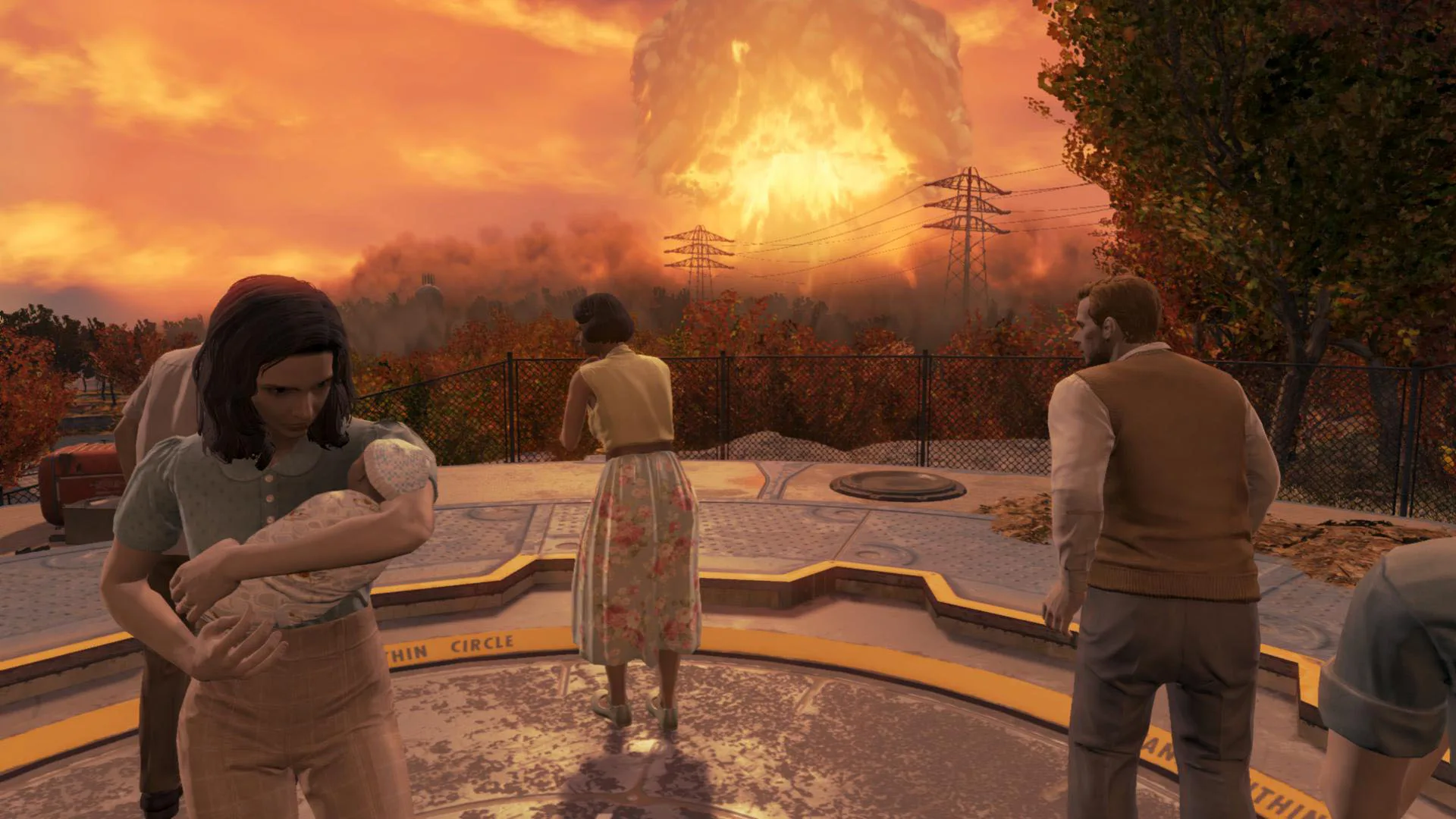 Fallout 4 had issues on both cards with stuttering and slowdowns. Here is the frametime plot for Fallout 4.
Fallout 4 had issues on both cards with stuttering and slowdowns. Here is the frametime plot for Fallout 4.
Here are the details are reported by FCAT-VR:
The RTX 2080 Ti delivered 121.39 unconstrained FPS with 12 Warp misses and 12 dropped frames, but 11% (703) of its frames had to be synthesized.
In contrast, the RTX 3070 delivered 111.31 unconstrained FPS with 1 Warp miss and 1 dropped frame, and it required 19% (1247) synthetic frames. The experience playing Fallout 4 on the highest settings is similar using the RTX 3070 or the RTX 2080 Ti and we can only wish that the game could still be optimized.
Next we look at Half Life: Alyx:
Half Life: Alyx
Half Life: Alyx uses an adaptive/dynamic scaling algorithm which uses a card’s performance headroom to subsample in demanding scenes and to supersample in less demanding scenes. We used the console commands to lock the SteamVR resolution to 100% so that it did not supersample or subsample.
We loved playing completely through the game at its launch, and it is a great long interactive VR experience and a worthy addition to the Half Life universe.
Here is the frametime plot for Half Life Alyx.
Here are the details as reported by FCAT VR.
The RTX 2080 Ti delivered 178.96 unconstrained FPS with 6 dropped and 7 synthetic frames. In addition, it suffered 6 Warp misses which was rather disappointing for such a short benchmark run.
The RTX 3070 delivered 168.96 unconstrained FPS and with no dropped but with 6 synthetic frames although it did not suffer any Warp misses.
Half Life Alyx isn’t particularly demanding although the visuals are great, and there isn’t any real difference playing on either card at our chosen settings so we would recommend increasing the Super Resolution to 130% in SteamVR settings, and let the game subsample or supersample as necessary.
Next we look at Hellblade: Senua’s Sacrifice.
Hellblade: Senua’s Sacrifice
Hellblade: Senua’s Sacrifice is a visually impressive game using the Unreal 4 engine. It is a dark and disturbing game that is far more intense in VR than playing the regular version. We benchmark at the Very Highest settings and with TAA, and we also increased the resolution to 140% in-game which is its maximum.
Here is the frametime plot for Hellblade: Senua’s Sacrifice.
Here are the FCAT VR details.[chart]
The RTX 2080 Ti delivered 102.86 unconstrained FPS with no dropped frames and no Warp misses. Yet surprisingly, 29% (1846) were synthetic frames.
The RTX 3070 delivered 100.84 unconstrained FPS with 2 dropped and 452 (7%) synthetic frames. It also suffered 2 Warp misses.
Hellblade isn’t particularly demanding until the Resolution is increased to 140% in-game causing the RTX 2080 Ti to run out of headroom. In this case, the RTX 3070 delivers a superior VR experience. We suggest lowering the in game resolution for both cards, but less for the RTX 3070.
Next we will check out another demanding VR game, No Man’s Sky.
No Man’s Sky
No Man’s Sky is an action-adventure survival single and multiplayer game that emphasizes survival, exploration, fighting, and trading. It is set in a procedurally generated deterministic open universe, which includes over 18 quintillion unique planets using its own custom game engine.
The player takes the role of a Traveller in an uncharted universe by starting on a random planet with a damaged spacecraft equipped only with a jetpack-equipped exosuit and a versatile multi-tool that can also be used for defense. The player is encouraged to find resources to repair his spacecraft allowing for intra- and inter-planetary travel, and to interact with other players.
Here is the No Man’s Sky Frametime plot. We set the settings to “High” which is above Enhanced, and we set the anisotropic filtering to 16x, and also upgraded from FXAA to FXAA+TAA.
Here are the FCAT VR details of our comparative run.
The RTX 2080 Ti delivered 100.59 unconstrained FPS with 5 Warp misses and 5 dropped frame, but 35% (2208) of its frames had to be synthesized. It isn’t a great experience and we would recommend playing it on Enhanced instead of High.
In contrast, the RTX 3070 delivered 100.86 unconstrained FPS with 2 dropped frames and 2 Warp misses, and it required 1107 (17%) synthetic frames.
The experience playing No Man’s Sky using Ultra settings is better on the RTX 3070 on High settings than it is playing with the RTX 2080 Ti even though the Unconstrained FPS are almost identical.
Next we will check out another VR game, Obduction.
Obduction
Obduction is considered the spiritual successor to Myst and Riven. It is an adventure game developed by Cyan Worlds using the Unreal 4 engine. There is an emphasis on puzzle solving which get more and more difficult as a player progresses.

Here is Obduction’s frametime plot.
Here are the details.
The RTX 2080 Ti delivered 103.12 unconstrained FPS with 2 dropped frames, 2 Warp misses and 2166 (34%) synthetic frames.
The RTX 3070 delivered 113.97 unconstrained FPS with no dropped frames or Warp misses and with 98 (2%) synthetic frames. The experience playing Obduction on Epic is better on the RTX 3070.
Next we will check out another demanding VR game, Project CARS 2.
Project CARS 2
There is no way to convey the incredible sense of immersion that comes from playing Project CARS 2 in VR using a wheel and pedals. It uses its own Madness engine, and the physics implementation is outstanding. We are disappointed with Project CARS 3, and may continue to use the older game for VR benching.
For this performance review, we have created a longer and more demanding benchmark than our previous one. We race the California coast and stay up with the pack this time making it more representative than before.
 Project CARS 2 offers many performance options and settings and we prefer playing with SMAA Ultra instead of using MSAA.
Project CARS 2 offers many performance options and settings and we prefer playing with SMAA Ultra instead of using MSAA.
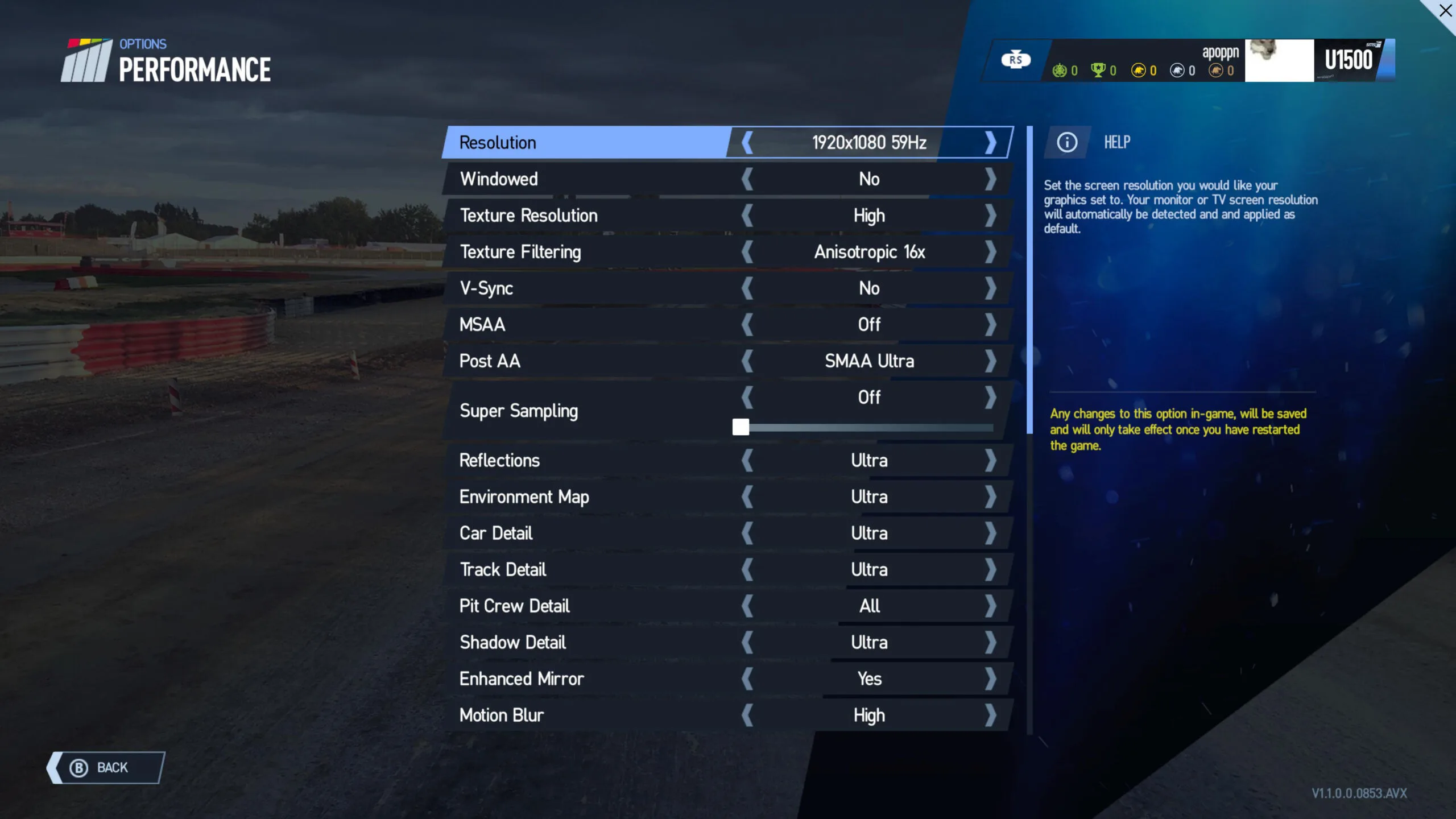
We used maximum settings and here is the frametime plot.
Here are the FCAT-VR details.
The RTX 2080 Ti delivered 93.98 unconstrained FPS with 10 dropped frames and 10 Warp misses, and 44% (4182) of its frames had to be synthesized.
The RTX 3070 delivered 87.25 unconstrained FPS with no dropped frames or Warp misses, and it also required many synthetic frames (4556/48%).
It isn’t a great experience playing with Motion Smoothing on, and we recommend lowering grass and reflections to maximize framerate delivery as motion smoothing or reprojection tends to cause visible artifacting. The experience playing Project CARS 2 using maximum settings is too demanding for either the RTX 3070 or the RTX 2080 Ti.
Let’s benchmark Skyrim VR.
Skyrim VR
Skyrim VR is an older game that is not as demanding as many of the newer VR ports so its performance is still very good on maxed-out settings using its Creation engine.
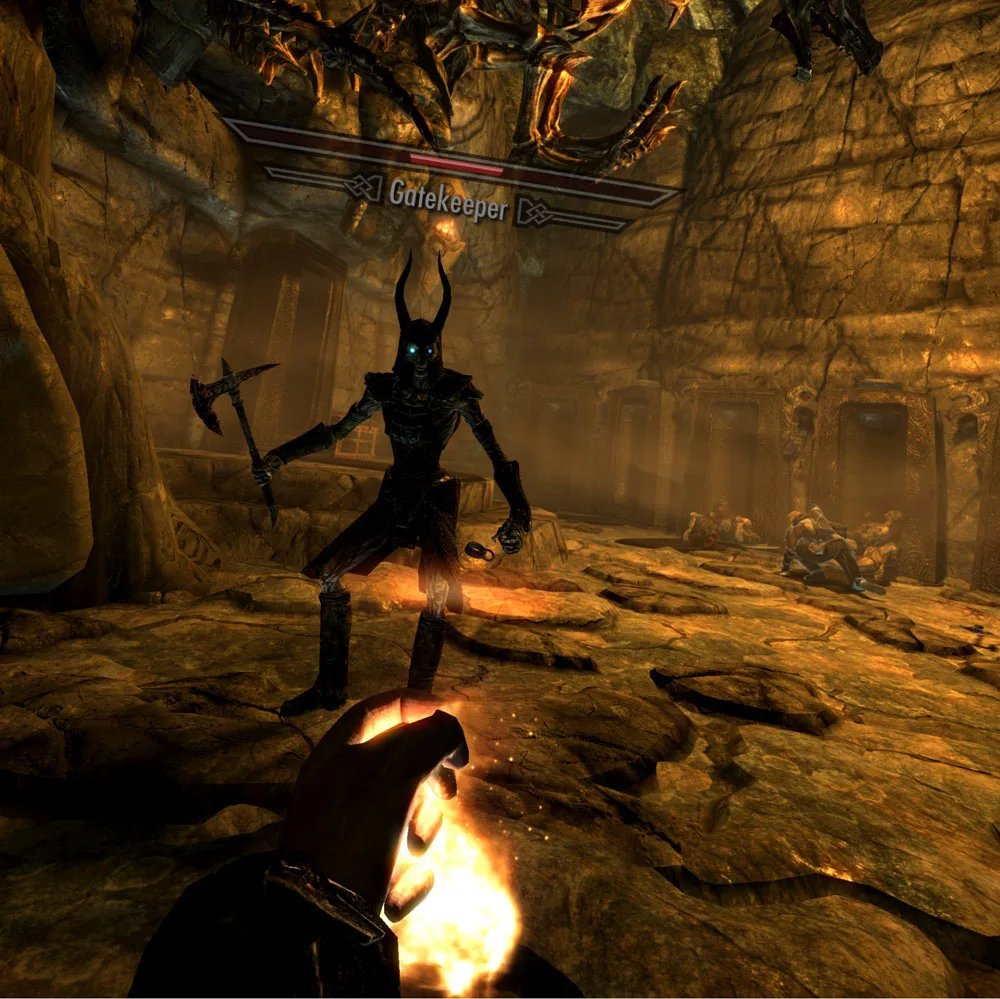 We benchmarked Skyrim VR using its highest settings, but did not increase the resolution in-game. Here are the frametime results.
We benchmarked Skyrim VR using its highest settings, but did not increase the resolution in-game. Here are the frametime results.
Here are the details of our comparative runs as reported by FCAT VR.
The RTX 2080 Ti delivered 214.12 unconstrained FPS with 2 dropped frames and 2 Warp misses, and 2 of its frames had to be synthesized.
The RTX 3070 delivered 202.12 unconstrained FPS and it didn’t have and dropped frames nor require any synthetic frames.
The game can benefit visually from increasing the in-game resolution further, and the VR playing experience is similar on both cards. Of course, many players would prefer adding mods to the game rather than increasing the resolution.
Let’s check out Subnautica next.
Subnautica
Subnautica uses the Unity engine. As the sole survivor of a crash landing, the player ventures into the depths of a visually impressive alien underwater world. Here you can explore, craft equipment and build bases, pilot underwater craft, and solve mysteries all while attempting to survive a hostile environment.
We benchmarked Subnautica using its highest settings plus TAA, but we left its resolution at 100%, and here are the frametime results.
Here are the details.
The RTX 2080 Ti delivered 84.20 unconstrained FPS, but 49% (3123) of its frames had to be synthesized.
In contrast, the RTX 3070 delivered 77.73 unconstrained FPS and it also required 49% (3136) synthetic frames. Neither card suffered any dropped frames or Warp misses.
The experience playing Subnautica using its highest settings is not ideal as it doesn’t appear to be well optimized.
Next up, The Vanishing of Ethan Carter.
The Vanishing of Ethan Carter
The Vanishing of Ethan Carter is built on the Unreal 4 engine and it boasts very good visuals although it is not demanding. Although it is considered by some to be a walking simulator, it is also an excellent detective game with great puzzles. Be aware that its style of locomotion tends to make some of its players VR sick.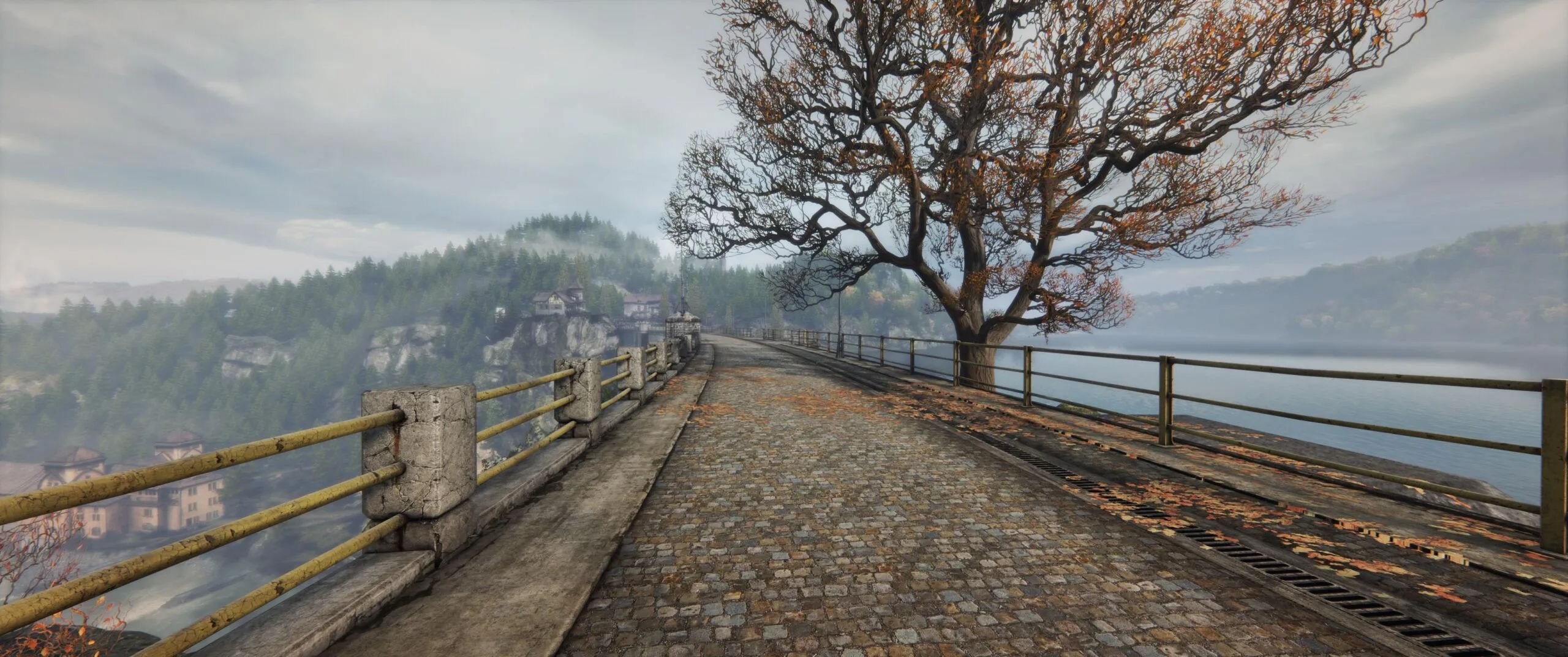
There are just a few in-game graphics options available, so we set 130% resolution in-game with TAA. Here is the frametime plot.
Here are the FCAT VR details.
The RTX 2080 Ti delivered 260.08 unconstrained FPS and the RTX 3070 delivered 280.77 unconstrained FPS. Neither card dropped any frames and the experience is identically smooth on both cards although the RTX 3070 has more performance headroom than the RTX 2080 Ti.
Although it is a beautiful game visually, The Vanishing of Ethan Carter isn’t particularly demanding even after the resolution is increased to 130% in-game, and then both cards can benefit further by increasing the Super Resolution in SteamVR.
Last up, The Walking Dead: Saints & Sinners.
The Walking Dead: Saints & Sinners
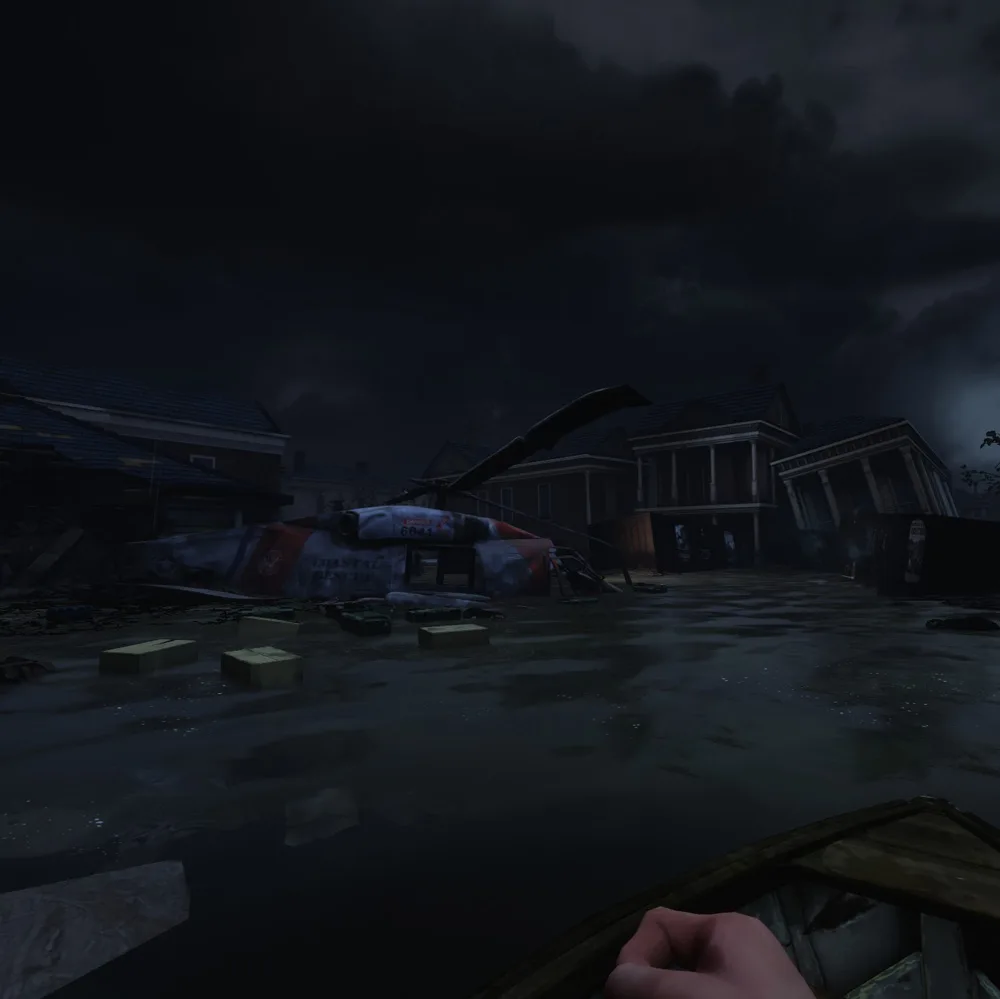 The Walking Dead: Saints & Sinner is the last of BTR’s 13 VR game benching suite. It is a first person survival horror adventure RPG with a strong emphasis on crafting. Its visuals using the Unreal 4 engine are outstanding and it makes good use of physics for interactions.
The Walking Dead: Saints & Sinner is the last of BTR’s 13 VR game benching suite. It is a first person survival horror adventure RPG with a strong emphasis on crafting. Its visuals using the Unreal 4 engine are outstanding and it makes good use of physics for interactions.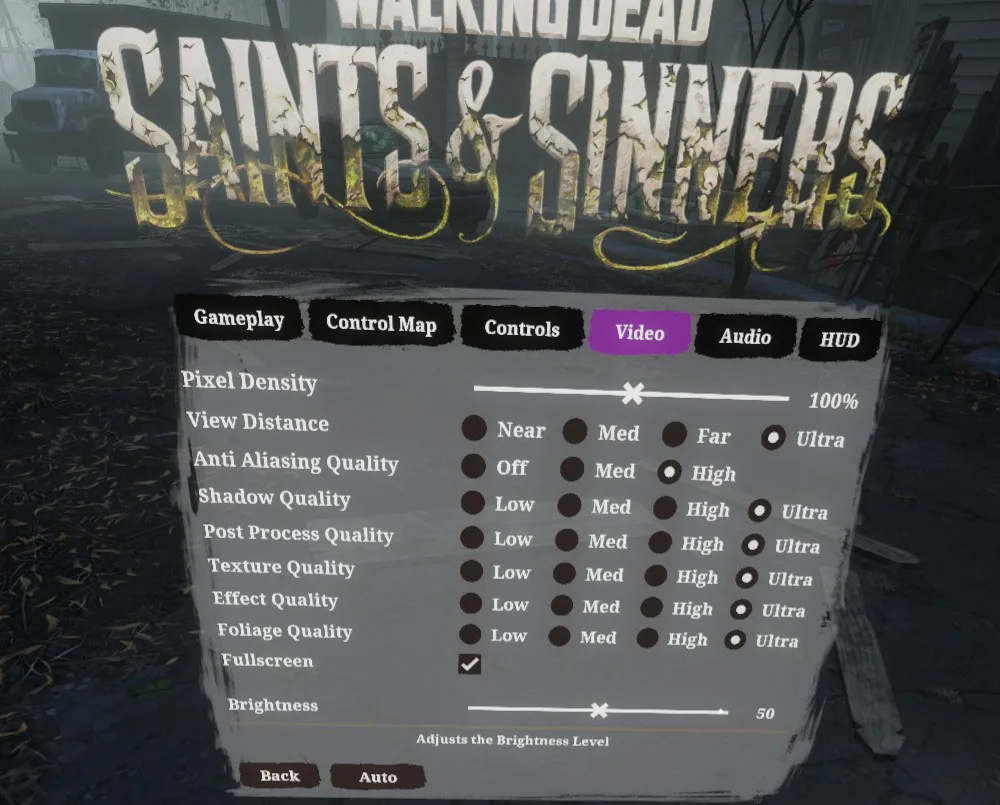
We benchmarked Saints and Sinners using its highest settings and with the Pixel Density set to 100% in game. Here is the frametime chart.
Here are the details as reported by FCAT VR.
The RTX 2080 Ti delivered 166.94 unconstrained FPS with no dropped frames or Warp misses, and none of its frames had to be synthesized.
In contrast, the RTX 3070 delivered a similar 166.09 unconstrained FPS with 2 dropped frames and 2 Warp misses, but it required 2 synthetic frames.
The experience playing The Walking Dead: Saints & Sinners using the in-game maximum settings at 100% Pixel Density is similar using the RTX 3080 or the RTX 2080 Ti. We recommend increasing the Pixel density in game to just below the point where synthetic frames are needed.
Let’s look at our overall Unconstrained Framerates Chart.
Unconstrained Framerates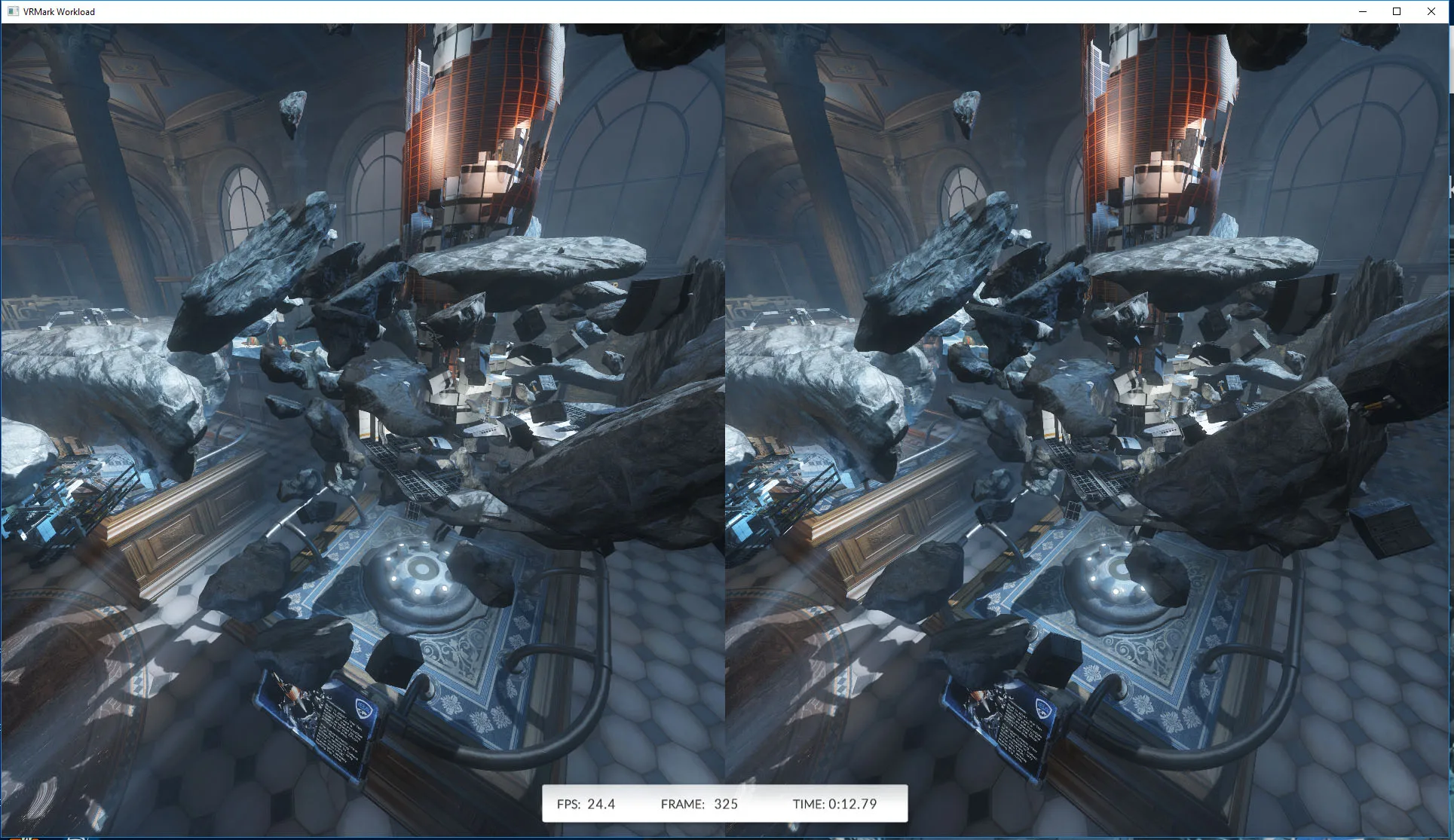
The following chart summarizes the overall Unconstrained Framerates (the performance headroom) of our two cards using thirteen test games and four synthetic benches: Superposition, VRMark’s Cyan and Blue Rooms, and the OpenVR benchmark.
Synthetic benchmarks are only useful for ranking cards. They don’t predict how any game will actually play in VR on any particular video card. Although the Unconstrained FPS information is useful as a general ranking tool for overall performance, it is completely useless by itself and the frametime charts and interval plots have to be considered together with it when comparing video cards.
Let’s check out our conclusion.
Conclusion
We are surprised that the RTX 3070 – although Ampere has no VR optimizations over Turing – is generally able to provide a slightly superior VR experience at the same settings over the RTX 2080 Ti. We think that the RTX 3070 is better than the RTX 2080 Ti is for VR, even more so than for pancake gaming. Of course, it is not an upgrade but a side grade, and we would recommend the RTX 3080 for RTX 2080 Ti owners who want more from their VR experience. But for VR enthusiasts who are looking for an upgrade from lesser cards, the RTX 3070 is a generally a better choice than the RTX 2080 Ti.
For VR gamers that use Turing or Ampere GeForce video cards, an excellent option for improving the visuals of a game without impacting performance is by using NVIDIA’s VRSS which is implemented at the driver level for DX11 Forward Rendered MSAA-enabled games. So far, over 30 games are supported including Boneworks and The Walking Dead: Saints & Sinners
We have also welcomed a new BTR VR reviewer, Sean, a racing and flight sim specialist who will follow-up his first SPS iRacing VRS performance review later this week using an even more demanding track and conditions also using a Turing video card.
We are also going to follow-up on our Vive Pro Wireless Adapter review to compare performance using an overclocked i7-8700K versus an i9-10900K. However, first we plan to follow up with a Reflex Analyzer kit review which features the ASUS ROG Swift 360Hz G-SYNC Gaming Monitor PG259QNR and the ASUS ROG Chakram Core Gaming Mouse. We will compare our Samsung G7 Odyssey 27″ 2560×1440/240Hz/1ms/G-SYNC/HDR600 monitor with the new 360Hz/1ms ROG Swift 24″ display.
Stay tuned to BTR!
Happy VR Gaming!
